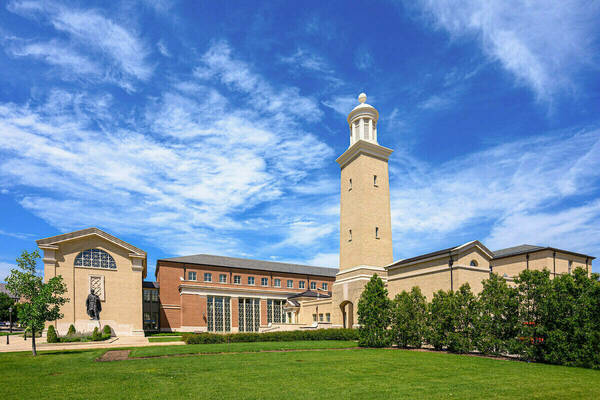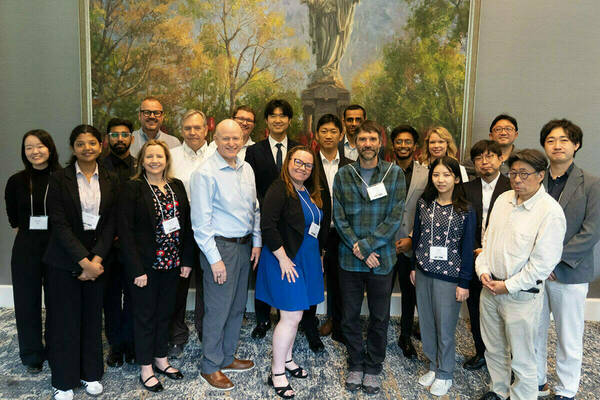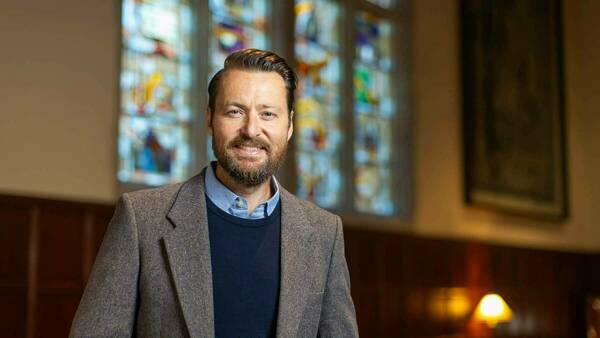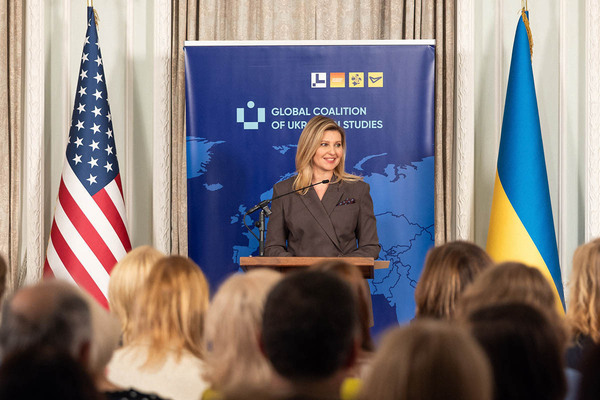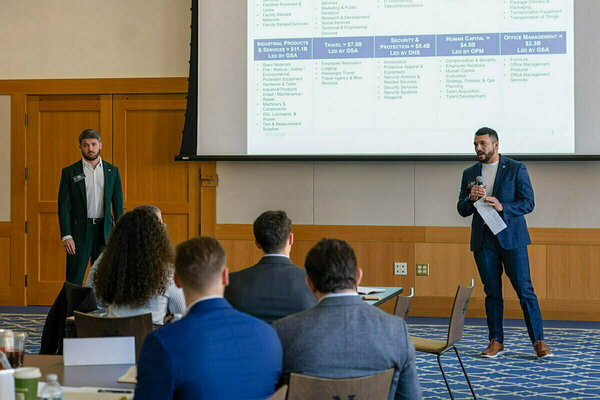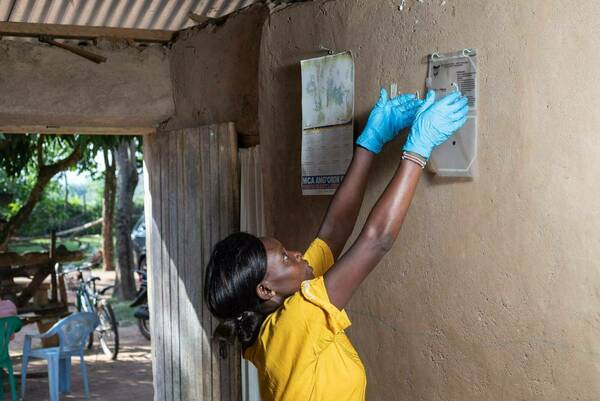Notre Dame School of Architecture poised for global leadership through historic investment
University of Notre Dame alumnus Matthew Walsh and his wife, Joyce, have made a transformative investment in Notre Dame’s School of Architecture. Their investment will significantly expand the global reach, research capacity and long-term vision of the school. Already a national leader in classical and new urbanist design, the school is now positioned to shape the teaching and practice of architecture for generations.
The $150 million gift represents an unprecedented commitment in the 160-year history of American architectural education. In recognition of this landmark gift, the school will be renamed the Matthew and Joyce Walsh School of Architecture at Notre Dame.
“We could not be more grateful for the tremendous generosity and extraordinary vision of Matt and Joyce, who through their leadership and support have ensured that the School of Architecture at Notre Dame will be among the very best in the world for generations to come,” said University President Rev. Robert A. Dowd, C.S.C. “Notre Dame strives always to be that great force for good Father Sorin envisioned at the University’s founding, and thanks to this remarkable gift, the School of Architecture — both through the leaders it prepares and the research it undertakes — will transform the field of architectural education.”
The Walshes’ gift will allow the school to substantially broaden its impact, while ensuring its ability to respond nimbly to future needs and challenges.
“Advancing Notre Dame as the leading global Catholic research university means elevating the research excellence of all of our colleges and schools,” said John McGreevy, the Charles and Jill Fischer Provost of the University. “Through the support of the Walsh family, our School of Architecture — widely renowned for its classical and new urbanist approach to the discipline — has an opportunity to build its already prestigious program in ways that will influence the teaching and practice of architecture in our country and around the world.”
Matthew and Joyce Walsh are dedicated, longtime champions of the University and the School of Architecture. In addition to supporting the 2014 renovation of Notre Dame’s academic facility in Rome, they provided a $33 million gift in 2013 to construct a new building to serve as a home for the School of Architecture. The 100,000-square-foot Walsh Family Hall opened in 2018 and emphasizes architectural character, long-term sustainability and energy conservation. The hall is located on the south side of the Notre Dame campus, joining O’Neill Hall, the DeBartolo Performing Arts Center, the Charles B. Hayes Family Sculpture Park and the Raclin Murphy Museum of Art in the University’s Arts Gateway.
“This new superlative gift is first and foremost a ringing endorsement of the importance of our unique pedagogy that demands respect for place, culture, climate and social purpose as it prepares students to address peoples’ physical need for shelter and place and their spiritual longing for community and identity. It is also an affirmation of our school’s commitment to a particular view of the profession of architecture and urbanism, one that is dedicated to designing beautiful, durable and resilient buildings that improve the way we live together in flourishing cities and in balance with nature,” said Stefanos Polyzoides, the Francis and Kathleen Rooney Dean of the School of Architecture. “Thanks to Matt and Joyce Walsh, from this point forward, the School of Architecture will be the only school of its kind in the world with the resources to match its ambitions of academic and professional excellence.”
Matthew Walsh, who received a bachelor’s degree in English from Notre Dame in 1968 and a law degree from Loyola University Chicago in 1972, served as chair of the School of Architecture Advisory Council from 2004 to 2021. He is a life member of the board of trustees of Saint Ignatius College Prep. Joyce Walsh completed a bachelor’s degree in French from Barat College. She has dedicated her time to raising their family and is a volunteer leader with Saint Ignatius College Prep.
The Walshes have three grown children, Matthew IV, Sean and Erin. Both Erin and her husband, Mike Gibbons, are 1998 graduates of Notre Dame. In addition, the Walshes’ son Sean and son-in-law Mike both earned EMBA degrees from Notre Dame.
“Joyce and I were introduced to the School of Architecture in 1996 by Andy McKenna Sr., then chairman of Notre Dame’s Board of Trustees,” Matthew Walsh said. “Our now three-decade journey with the school, its deans, professors, students and our Advisory Council peers has been transformational for both of us. Our goal in making this gift is to ensure that the Notre Dame School of Architecture continues to lead architecture across the world and the creation of world-class environments.
“Notre Dame architects have always been inspirational leaders. Our goal is to ensure that continues in perpetuity.”
After earning his law degree, Matt Walsh joined his family’s business, Walsh Construction, a Chicago firm that was founded by his Irish immigrant grandfather, Matthew Myles Walsh, in 1898. Matt Walsh and his brother Dan co-chair the firm, leading it together with all of their adult children. Walsh Construction is a national leader in the construction industry with major transformational projects in most leading U.S. cities. The firm is one of the largest builders of major infrastructure in North America.
The School of Architecture at Notre Dame was established in 1898, the same year as Walsh Construction, as the first such program at an American Catholic college or university. The school offers a five-year bachelor’s degree program in which students spend their entire third year at the University’s facility in Rome. The program also offers master’s degrees in architecture, urbanism and historic preservation.
Contact: Carrie Gates, associate director of media relations, c.gates@nd.edu, 574-993-9220
Originally published by at news.nd.edu on September 25, 2025.
Latest Research
- NSF Cyber SMART’s fall meeting shapes fifth year of project, legacy and future plans, and adds new memberThe U.S. National Science Foundation (NSF) Cyber SMART center gathered for its fall meeting on the University of Notre Dame campus this September. The meeting served as a checkpoint with progress reports and new projects from research leads and students…
- Slavic and Eurasian studies professor wins Humboldt fellowship to research how Russia’s religious past shapes its presentWhen Russia invaded Ukraine on Feb. 24, 2022, Sean Griffin realized his second book needed a new title. Griffin, an associate professor in the University of Notre Dame’s Department of…
- Notre Dame’s R.I.S.E. AI Conference builds interdisciplinary collaboration to inform human-centered artificial intelligenceAs artificial intelligence (AI) transforms nearly every sector of society — from healthcare and education to governance and global development — a critical question emerges: How can we conscientiously design and deploy these powerful technologies to positively impact society? This…
- University of Notre Dame joins the Global Coalition of Ukrainian StudiesThe University of Notre Dame has joined the Global Coalition of Ukrainian Studies after signing a Memorandum of Cooperation (MOC), formalized on September 24, 2025, at the Ukrainian Institute of America in New York City. Notre Dame joined four other American…
- The University of Notre Dame’s Mendoza College of Business and Industry Labs team up to inspire national security manufacturing competitiveness in the regionThe South Bend - Elkhart Region is full of manufacturing companies that are poised to grow, and Executive Master of Business Administration (EMBA) and Master of Business Administration (MBA) students at the University of Notre Dame are finding innovative ways to contribute to that growth. Earlier…
- Notre Dame research informs WHO conditional recommendation for spatial repellents in malaria vector controlThe World Health Organization (WHO) recently announced a “conditional recommendation” for spatial emanators, also known as “spatial repellents,” in the fight against malaria. This key determination was informed by spatial repellent studies that included the Advancing Evidence for the Global Implementation of Spatial Repellents (AEGIS) Project in Kenya, led by the University of Notre Dame and funded by Unitaid. The findings from this particular study were recently published in The Lancet.



